Whether you are a first-time snake plant owner or a veteran of owning snake plants, the most important goal is keeping the plant happy and healthy.
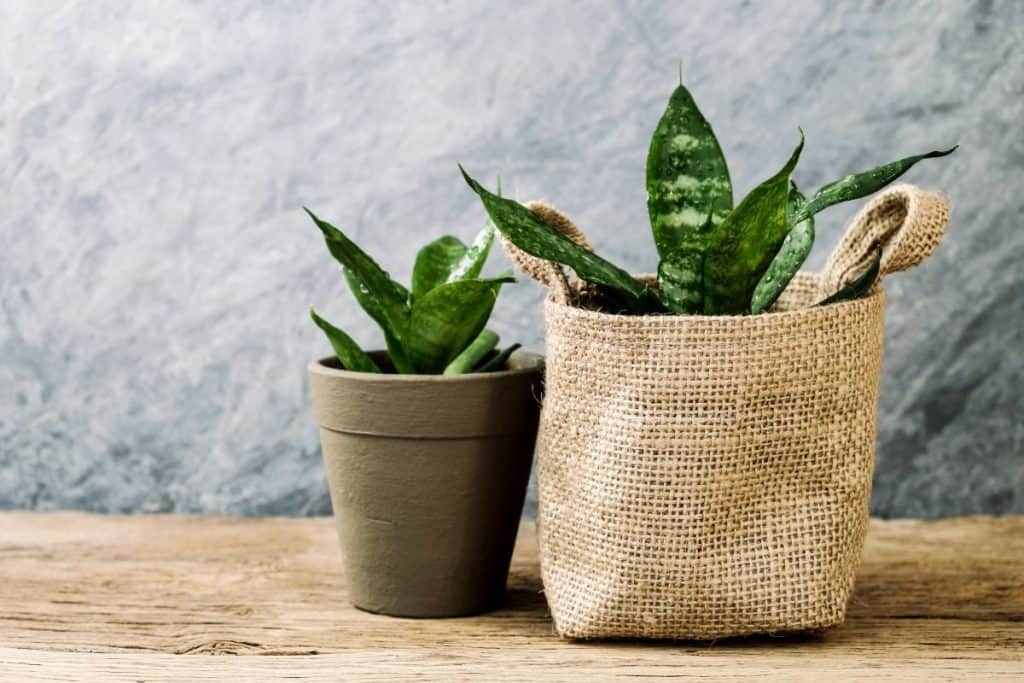
There are many factors involved when choosing a pot and caring for your plant. The size, material, and how well it drains all need to be considered before purchasing.
Choosing right pot for your Snake Plant
We have researched this subject in depth so your plant can be at its optimal health.
The ideal pot material for a snake plant is one made of terra cotta. This material allows the plant's root system to breathe and keeps excess moisture from building up and causing root rot.
Snake plants are susceptible to root rot, which can be fatal to the plant.
The pot you choose must be shallow enough that the root system is crowded. A good rule of thumb is a pot 1/3 the size of the roots, in length and width.
Now you know the basics of what kind of pot we need, but why?
Why is terra cotta better?
How do we ensure there is good drainage?
Can a pot be too crowded?
When does the plant need to be re-potted?
Let’s dig a little deeper into why all these factors matter when it comes to your plant.

Terra Cotta - the Best Pot Material for Your Snake Plant
Terra cotta is the best pot material for a snake plant because it allows its roots to dry quicker and helps its root system breathe.
Snake plants are very susceptible to root rot, which can ultimately result in the plant dying.
Having control of the moisture of the soil is a big factor in keeping your plant growing strong.
Other materials such as plastic and ceramics can hold water longer than needed for the plant.

Click here to see a terra cotta pot on Amazon.

How To Make Sure You Have Good Drainage
Excess water is a snake plant's worst enemy. Having good drainage in a pot is crucial to your plant's survival.
When buying a pot you have to look at the bottom. There should be multiple small holes.
These holes allow any excess water to leave the pot and keep the water from just sitting there.
Another good way to ensure good drainage is to make sure you have the correct soil.
If you are using regular soil; perlite will need to be added to allow quicker drainage and to improve the soil's aeration.
You also have the choice of using premixed soil for cactuses, these mixes are made for plants that need less moisture and more air.
Drainage is important but you may find that the holes in the bottom of your pot are too effective and the soil gets out of the bottom when watering.
Placing a coffee filter over the holes allows the soil to stay in place; while giving correct drainage.
To learn more about this topic, check out this post: Does A Snake Plant Need Drainage?
Do Snake Plants Like To Be In Small Pots?
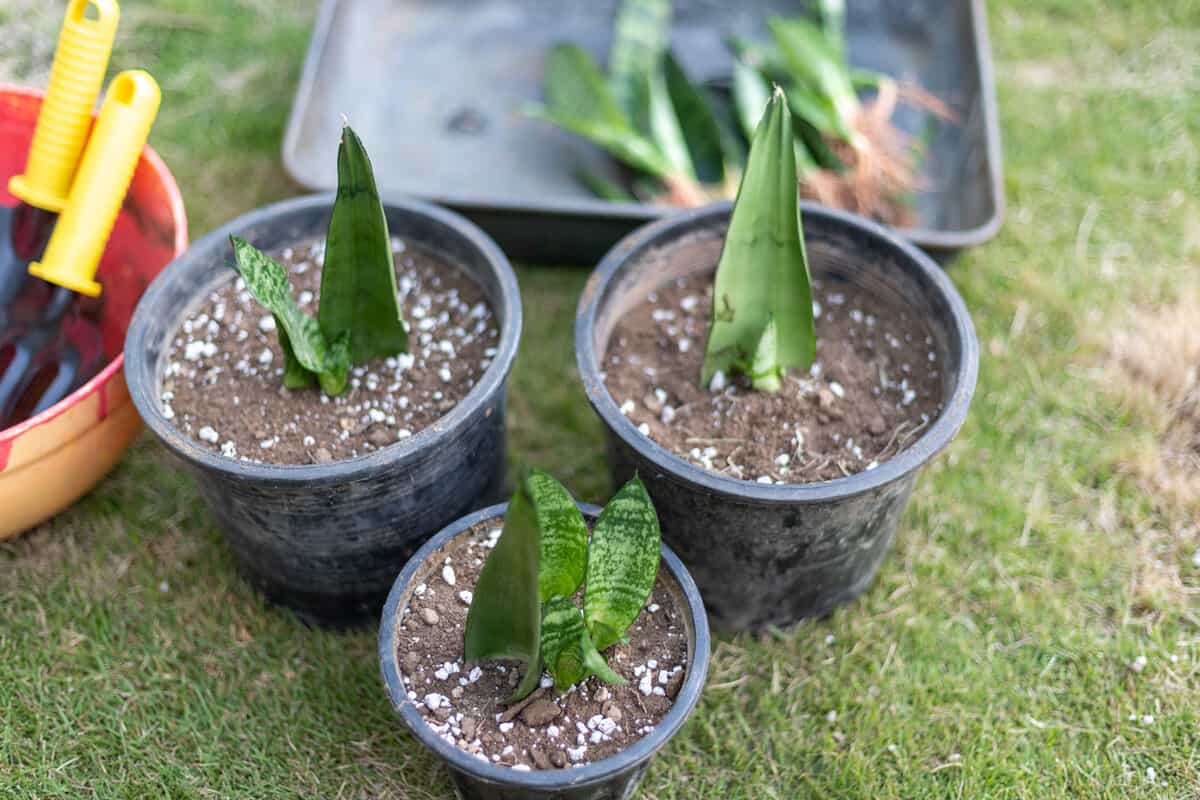
Snake plants need a pot that’s 1/3 bigger than the roots to allow the plant to grow properly without giving it too much room.
Too big of a pot could allow excess water to sit. Moving the plant too quickly in the size of the pot can put the plant into shock.
If your plant is in a four-inch pot you will want to only go up to a six-inch size at most.
Do Snake Plants Need Deep Pots?
Having too deep of a pot can allow water to sit longer and hinder drainage as well.
The plant needs to be given enough space to grow but is still snug in the pot. The roots of the snake plant or rhizomes grow outward first instead of growing deep into the soil.
The roots of your plant can touch the bottom of your pot. Your plant will be happy in a shallow pot that fits snugly.
Do Snake Plants Like to be Crowded?
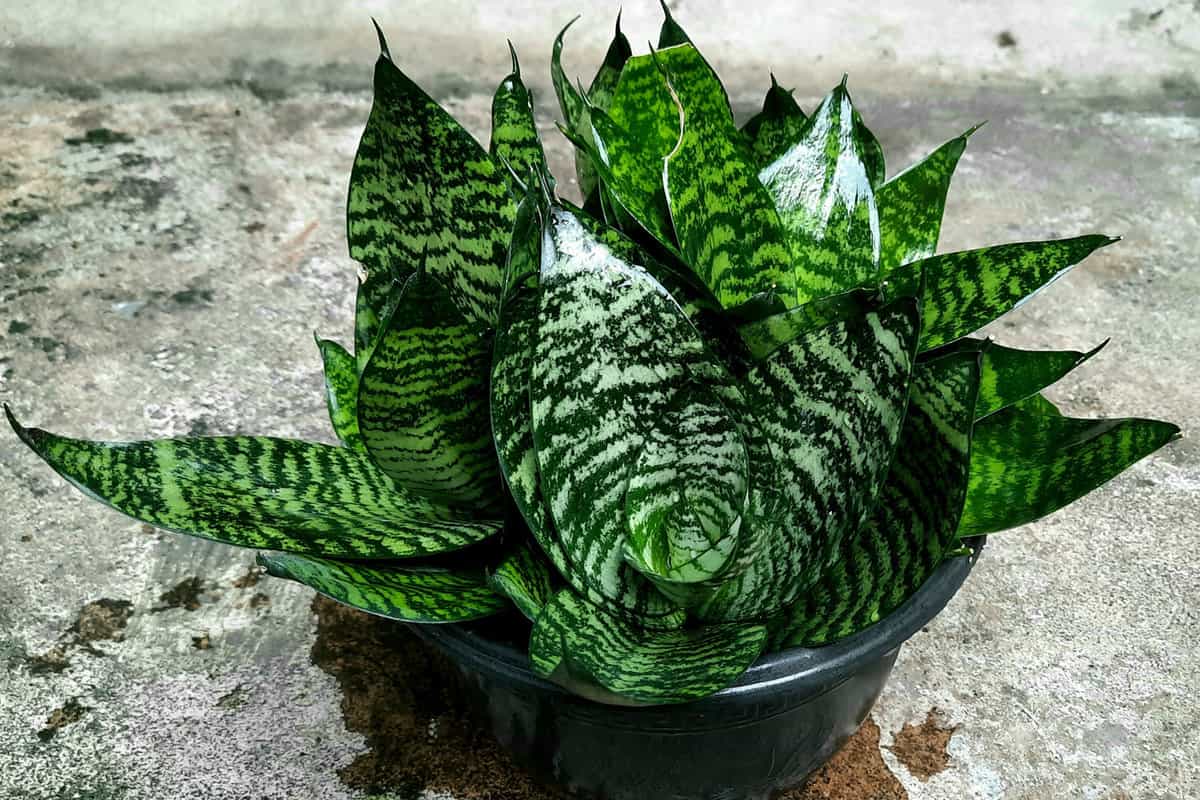
The more the merrier! Snake plants love being crowded and cramped.
The root system works better as a large team ensuring the plant gets all the nutrients it needs.
The more plants together, the more roots it has to fill its container. Snake plants are one of a few plants that like being crowded and nearly root-bound.
Root-bound is where the roots of the plant have taken up all extra space in its container.
The roots will take the shape of the pot that it’s in and that’s okay, as long as the roots are not coming from the pot's drainage holes.
When Should You Repot a Snake Plant?
There are only a few times you should worry about repotting your plant. These times include:
- If you can see the roots out of the drainage holes.
- The pot that it’s in is broken.
- If you have to change the soil due to an insect infestation.
When you do happen to repot the plant, you need to be conscious of the time of year.
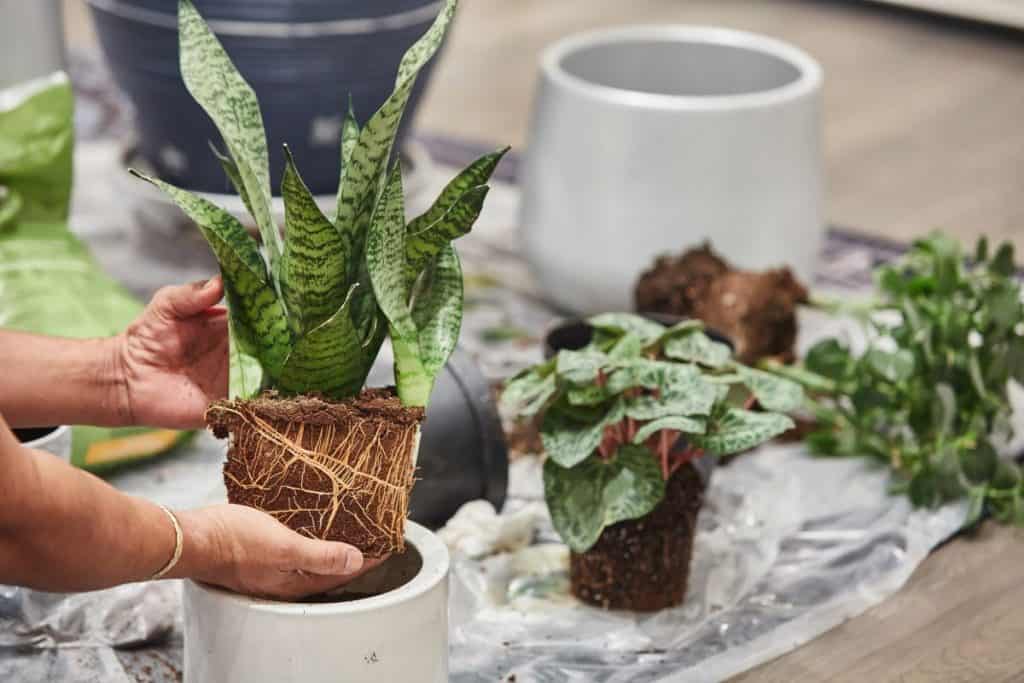
Winter and early spring are the best times for repotting. During these two times a year, the plant is in a dormancy growth and will be less stressed when being put into a new pot.
Where Should You Place A Snake Plant?
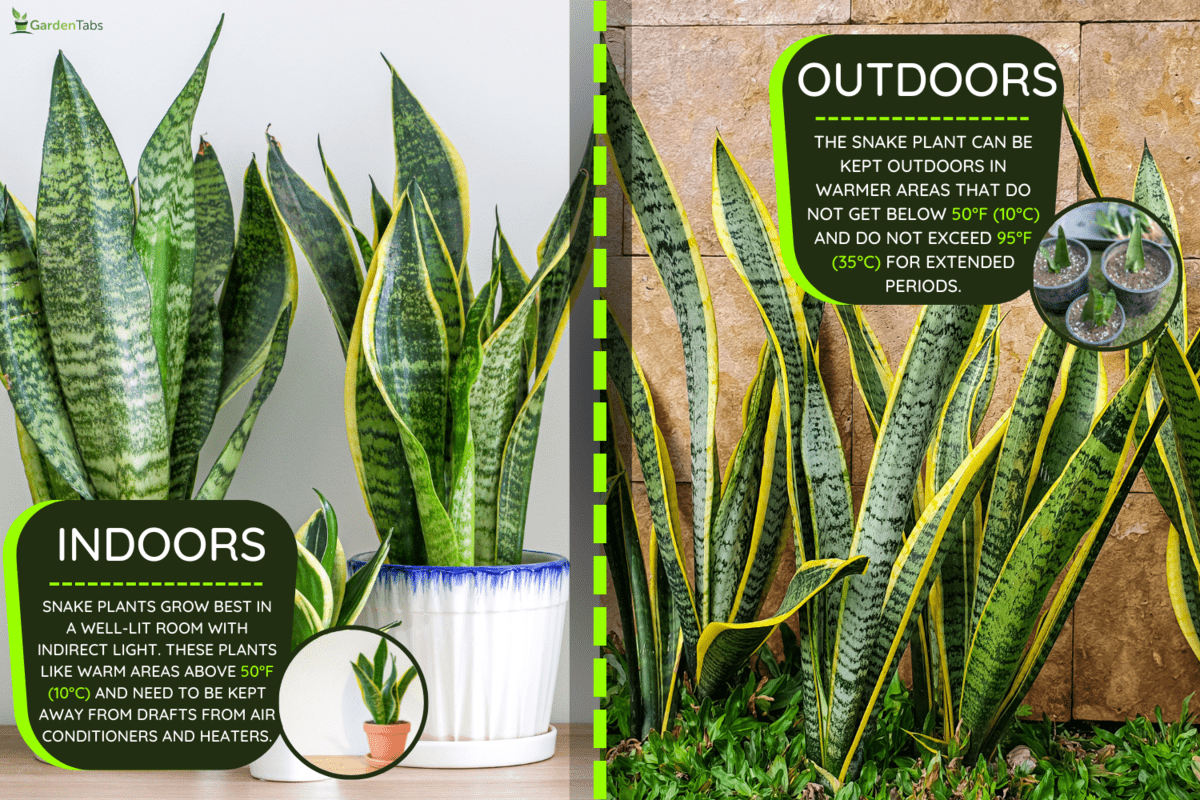
Now you have the plant and the correct pot but where do you put it now that you have it at home?
Choosing the best location inside or outside your home can be overwhelming. Personal preference and climate have a lot to do with where your new plant will go.
Indoors
Snake plants grow best in a well-lit room with indirect light. These plants like warm areas above 50°F (10°C) and need to be kept away from drafts from air conditioners and heaters.
Even though the snake plants like well-lit rooms, they can also survive in low-light areas of the home. If put into a low-light area they may grow slower than normal and need to be watered less often.
Outdoors
The snake plant can be kept outdoors in warmer areas that do not get below 50°F (10°C) and do not exceed 95°F (35°C) for extended periods.
Snake plants receive a wide range of light and do well in direct and indirect light outside. Even outside though the plants need to have good drainage.
If they are directly planted in the ground, the plant needs to be in an area that stays relatively dry.
If you want to know more on this topic, check out this post: Can A Snake Plant Grow Outside?
Final Thoughts
Having the knowledge of what your plant's needs are, will set you up for success in your adventure as a snake plant owner. You have been given a plethora of information today.
Potting material, type of soil, drainage, depth, and size of your pot all come into play when making sure your plant is healthy and thriving.
Your biggest enemy to any snake plant is excess water and poor drainage. Both of those will affect your plant's growth and root system the most, resulting in fungal infections.

My snake plant is tall but top heavy! Any tips?
Please check this out: https://gardentabs.com/how-big-do-snake-plants-get/
Do they make terracotta pots with multiple drainage holes
Great suggestions..has been very helpful..
This plant is so nice to keep in doors